- Home
- Alex Irvine
Independence Day: Resurgence: The Official Movie Novelization Page 2
Independence Day: Resurgence: The Official Movie Novelization Read online
Page 2
Janine had a lot of ideas, and they were often good ones. Adams wouldn’t have climbed the career ladder so quickly without her, and both of them knew it.
“We’re two minutes out, General,” the pilot informed him. Adams nodded even though the pilot couldn’t see him. It was a distracted reflex. His attention was occupied by the scene below. They crested a pass between two mountains, revealing a sight Adams never got tired of seeing.
Spread out over miles of the salt flats, and still looming large enough to be part of the horizon from Area 51, was the wreckage of one of the alien city destroyers.
In flight, each of the city destroyers had blotted out the sun over a large metropolis—in more than a hundred of those instances, they were the last things citizens ever saw. New York, Washington, D.C.… Four of America’s largest cities lay in ruins by the time the sun set on July 2, 1996. Fifteen by the end of July 3.
Fifteen still, on July 4. The same was true on a larger scale worldwide. London, Berlin, Paris, Bombay, Shanghai, Moscow, Lagos… the list went on, and would have been much longer were it not for the heroism of President Thomas Whitmore and the pilots who had flown with him. Because of their courage, the devastated wrecks of three dozen city destroyers lay scattered across the world, monuments to the dangers that came from space and the resilience of humanity in fighting them.
The destroyers’ landing arms—petals, the scientists called them, because of the way they had unfolded from the craft before landing—were each larger than three aircraft carriers lined up nose to tail. Or bow to stern, if you were a Navy man… which Adams wasn’t. The main body of each destroyer was fifteen miles in diameter, a circle containing huge fighter hangars, labs, facilities for growing the various organisms the aliens had domesticated and engineered for their own use, command and control rooms, and a seemingly infinite number of other inscrutable devices that would keep Area 51’s scientists busy for decades.
Scattered across the salt flats, the wreckage still held some of the incredible menace of the ship in flight, when it had seemed impossible that it could be destroyed. Adams had been a staff officer during the invasion. He’d coordinated surveillance and intel for the joint command that oversaw the pilots who flew to their deaths attacking the city destroyer, and nobody had been happier than him to see it go down when that lunatic crop duster had flown his jammed missile right up the barrel of its main weapon.
Russell Casse, that was his name. Adams tried to take a lesson from that moment. He would never have let Casse near one of his jets, if the fate of the planet hadn’t been at stake. The truth was, he’d been inclined not to anyway. And then Casse’d come through, sacrificing himself in a manner as heroic as any career serviceman. You never knew about people.
In the aftermath of the War of ’96, when the Army had led the war against the surviving aliens, Adams had seen enough combat to put him on the track to the stars he currently wore on his collar. His mission in the Atlantic had been one of the toughest—he hated being undersea even more than he hated outer space. Still, it had been a success, and results were all that mattered.
He’d spent the next twenty years coordinating efforts to reverse-engineer alien technology and put it to use, and that in turn had put him right in the middle of the founding of the Earth Space Defense initiative. He was no-nonsense and demanding, because the work required it, but he was also smart enough not to think he knew everything. That meant he was good at putting the right people in place, and he had taught himself to listen to them even when they spouted crazy theories.
After all, as far back as the 1970s some of the scientists had voiced theories about what would later be the alien invasion.
If more people had listened then…
But that was hindsight. Pointless. What mattered was today, and what ESD could do to keep the people of Earth safe—which was why he was on this chopper, instead of lingering over breakfast with his wife. Not many people on the planet knew as much about the aliens and their technology, and it all began when the city destroyers came crashing down to earth. He had flown over this one a hundred times, and to him the sight of the monumental wreckage would always mean one thing.
Victory.
Thousands of workers were breaking it down, and as the chopper skimmed over the wreck, many looked up. One of them even waved. Adams didn’t wave back.
Recovery teams worked around the clock, loosely divided into two different specialties. Inside the vast spaces of the destroyer, dedicated teams of technicians and scientists investigated the ship’s systems. The aliens apparently used genetically tailored organisms for a number of tasks, which kept an entire department of biologists and geneticists busy. Extraterrestrial computing systems were built on completely different principles than Earth’s, and had spawned a whole new science of mind-based computing.
Even now, after twenty years, scientists were in the depths of the ship, learning more about how those systems worked. Their initial results found their way to the research and development wing of the new Area 51, where applied scientists and computer engineers hybridized the technology and built it into new generations of military hardware.
The structural and materials engineers, on the other hand, had different interests, and for them, teams recovered huge intact pieces of the ship’s hull and mechanisms. Military contractors had designed transport platforms specifically to move those pieces from the crash site to Area 51, where a battalion of engineers waited to document them and take them apart, piece by piece, analyzing each component in an ongoing effort to understand and utilize the alien technology.
The invasion had left terrible destruction in its wake, and hundreds of millions dead—but it was also a gift, in a way. Because of it, Earth knew what was out there, and knowing enabled them to prepare for when they encountered it again. Adams had made it his life’s work to guide that preparation.
The city destroyer fell away behind them and the chopper followed the main approach road from the crash site to the new Area 51. Not for the first time, Adams reflected on how Area 51—once the focus of so many conspiracy theories—had become exactly what the most wild-eyed kooks of the 1950s had believed it to be. The nerve center of Earth’s investigation of alien technology.
In old photographs, the Groom Lake facility was just a few buildings behind a fence. It had grown to include runways, hangars, several small repair and manufacturing facilities, and laboratories. For decades the government had denied its existence. Until the aftermath of 1996, they had continued to deny its true purpose—which had always been to investigate, analyze, and attempt to use bits of extraterrestrial technology. The spy planes and stealth technology were all part of that, the tip of the iceberg that eventually became visible to the public. Yet for every B-2 that thrilled spectators at an air show, there were a dozen other projects that only a few people on Earth knew about.
Then, after 1996, Area 51 had exploded into a small city of its own, built alongside a huge complex of research facilities—the best in the world. Crashed alien fighter craft, pieces of unidentified technology from the alien vessels, even a few surviving invaders themselves, all had been brought here. Now Area 51 was one of the largest military installations on planet Earth. Thousands of military and civilian workers lived and worked there. Manufacturing and testing facilities were getting close to good enough to reproduce alien technologies.
All of it existed for one purpose.
When the aliens came again, Earth would be ready.
And they would come again. Adams knew it. They’d made contact once, and gotten a bloody nose, but any race that would traverse the great spaces between the stars would possess the kind of determination that a single setback couldn’t overcome. Adams had studied military history his entire adult life, and there was a truism. The conqueror didn’t give up after his first effort failed. The aliens would come back, and when they did, they would be pissed.
The chopper flew toward the helipad next to the fighter hangar. As it swung around to
orient itself for landing, Adams could see the destroyer again, a few miles away. He remembered watching it burn after it crashed to the ground.
That crazy drunk crop duster…
His final missile jammed in his jet’s own launch bracket, and he’d flown it straight up the aperture of the destroyer’s main weapon assembly. Pure guts.
At the time Major Adams had been attached to the Area 51 R&D wing, but he hadn’t known all of its secrets. What he had known was that new technology kept appearing, along with orders to integrate it into existing fighter jets and other military hardware. He’d heard the rumors, of course, knew that Area 51 held secrets to which his security clearance did not entitle him—but when he’d learned the full truth, he’d been astonished.
Area 51 had been doing alien research since 1947.
Incredible.
Once he’d recovered from the surprise, Adams had applied to join the accelerated alien research projects. He’d seen some combat when the survivors from the city destroyer came boiling out in a last murderous attack, but most of his career had been, and was, dedicated to turning the aliens’ technology against them. Against whatever else might be out there among the stars.
All enemies, foreign and domestic, the oath said. After 1996, Adams had mentally added extraterrestrial.
Now he was one of the officers in charge. Using the alien materials, science, and especially the anti-gravity propulsion systems, humankind had reached out into the solar system. There were bases on the Moon, Mars, Rhea, and others were in the planning stages. Humanity had taken a weapons lesson from the aliens, as well.
Cannons based on the city destroyers’ main weapon were the next step in human defense. Dozens of them were lined up at one end of Area 51, in various stages of construction. Dozens of others ringed the Earth in geostationary orbits, linked to the command center here in Nevada. Still more were on the way from Earth to the space-based installations on other planets and moons. Before Adams retired, he wanted to be able to look at a map of the solar system and not find a hole through which an alien aggressor could get close to Earth—not without humanity knowing about it ahead of time and having the capacity to react.
That would be a legacy worth leaving.
Near the rows of cannons, next to the research complex, a large red cross painted on the roof marked out the hospital named for President Whitmore’s first lady, Marilyn, who had died during the War of ’96. Adams had met the president only once, and admired him as much as he admired any man on Earth. It was sad to hear about the mental decline Whitmore had experienced in recent years.
The president’s daughter, Patricia, would have been a good pilot, following in her father’s footsteps, but she’d left flight school to be closer to him, back in D.C. She’d landed on her feet, though, and was an assistant of some kind to the new president, Lanford.
Solid woman, Adams thought. Better than her predecessor, Bell.
The hospital in which Marilyn Whitmore had died was now a world-class research and medical facility. Here again, alien research had given humanity new insights. The invaders were so much farther along the biotech learning curve that even after twenty years, Adams knew the human race still had a long way to go to catch up. Even so, new advances were saving lives. Most of that research was centered here, because most of it was based on classified material and couldn’t be shared with other medical facilities. Maybe someday, Adams thought, but not quite yet.
The chopper hovered for a moment as the ground crew cleared away from its rotor wash, and General Adams wondered again what had lit a fire under the staff.
He would find out soon.
2
Dr. Milton Isaacs took a break from his rounds in the Marilyn Whitmore Hospital to check in on Brakish. There weren’t many patients in the hospital, since it was on the grounds of the alien research facility at Area 51, and outside of the occasional workplace accident or bout of the flu, the local population was quite healthy.
He entered the room carrying a plant he had ordered from an orchid vendor in California.
“Good morning, Brakish,” Isaacs said as he took the plant to the windowsill and placed it among the others already there. “I brought you a new one.” Most of them were also orchids. Brakish loved orchids. Occasionally Isaacs let himself succumb to magical thinking and imagined that reciting their scientific names would be the incantation that finally brought Brakish out of his coma.
“Dactylorhiza maculata,” he said as he approached Brakish’s bedside and combed his long gray hair. “The spotted orchid. When it fully blooms the lilac will take your breath away.” He paused as if listening, his eyes never leaving Brakish’s face. “I made you a gift. I think you’re gonna love it.
“No, I’m not going to tell you,” he added. “You’re just going to have to wait.”
He always made a point of pausing in his little monologues, giving Brakish a chance to respond, even though in nearly twenty years Brakish had not once made a sound. Seven thousand three hundred days. Well, with the leap years it was seven thousand, three hundred and five, but to Isaacs the round number was almost more of a milestone.
He had been at Brakish’s side, helping to extract the alien from its genetically engineered exoskeletal armor. They hadn’t known much about the aliens then, having only been able to study three of them over the years. Brakish had the idea to cut through the suit and attempt direct communication. The presence of President Whitmore, watching from the viewing room next to the surgery, had Brakish worked up into quite a state. He was always proud of his work, and this was his chance to show the president himself what the scientists at Area 51 were doing to justify their enormous black budget.
Then everything had gone wrong.
The alien’s telepathic attack came as a complete surprise. Physically, too, it had lashed out and instantly killed or wounded everyone in the room—Isaacs included. He still had the scars from the lash of its tentacles, but for Brakish the experience was far worse. The alien had forced its way into his mind, used him as a puppet to speak to the president and make clear that there would be no peace, no coexistence. Only war, until one side or the other was destroyed.
Isaacs remembered starting to regain consciousness just as the soldiers in the viewing area shot the alien through the surgery’s windows, breaking the telepathic hold it had on Brakish. A few days later, when Isaacs was sufficiently recovered to visit Brakish, the man was in a coma.
They’d thought it would only last a few days, until his brain recovered from the trauma, but those days had lengthened into weeks, and then years. Over time Isaacs had been absorbed into the new research avenues. No matter what else occupied his working hours, however, Isaacs always kept his eye out for new orchids, and he made sure to visit Brakish at least once a day. On working days, he stopped in twice, before and after his shift. In that way two full decades had disappeared into the past. Twenty years of Isaacs’ life had included tending his comatose lover, and nursing the fragile seed of hope that one day he would awaken.
They hadn’t been open then—in 1996 it was a different time, and fraternization among staff was frowned upon no matter what gender the fraternizers might be. To be gay at Area 51 was to be very discreet. Over the twenty years since, the stigma of his sexuality had gradually disappeared, until he could openly mourn and care for Brakish. Isaacs had never been tempted away. Brakish was the love of his life. He didn’t want anyone else.
Some day, he believed, Brakish would wake up. He would look around and see the orchids lining his windowsill, and he would know Isaacs had been there for him the entire time.
That was love. Simply that. Being there for someone else no matter how difficult it became.
“Dr. Isaacs report to the ICU,” a nurse’s voice said over the hospital speaker. Isaacs sighed. It was time to get back to work.
“I’ll be back,” he said, and he patted Brakish’s hand before leaving to answer the call.
Love, he thought. It drives us to do things w
e never thought were possible. Like having conversations with a man who has been in a coma for nearly twenty years. He believed that somewhere deep in his mind, Brakish heard him. That seed of hope lay within both of them, perhaps, ready to germinate and then grow into a new life together.
Twenty years wasn’t too long to wait. Someday Brakish would wake up. He would reappear, his eyes still alight with the joy of discovery, his enthusiasm still infectious even when other people didn’t know what he was talking about, his good humor still invulnerable to the attacks of pessimists and naysayers. Isaacs had never met anyone like him, and never would again.
Tomorrow, he thought. Maybe it’ll be tomorrow. He said it to himself every time he was walking out of Brakish’s room.
* * *
Isaacs left the room.
He didn’t see Brakish Okun’s fingers twitch on the crisp white sheets of the hospital bed.
3
A black SUV, standard base transport, was waiting for General Adams when he got out of the helicopter.
He returned the driver’s salute and climbed in the back, watching the base go by until the SUV pulled up at the entrance to one of Area 51’s central research buildings. Waiting outside the entrance was Lieutenant Jim Ritter, one of Adams’s handpicked subordinates in the alien technology research project.
Ritter snapped to attention and saluted.
“Sir,” he began.
Adams cut him off. “This better be good. My wife and I were enjoying a very nice morning at a very expensive bed and breakfast.”
“I’m sorry,” the lieutenant said, “but I thought you should see this.”
Despite his irritation, Adams was intrigued. The building housed the prison wing of the research complex—and it wasn’t a prison for human beings.
During the course of years fighting against surviving aliens, hundreds had been captured and sent to New Mexico. The most famous capture, of course, was Captain Steven Hiller’s. He had dragged a parachute-wrapped prisoner across miles of desert while the initial invasion fleet was still destroying the great cities of the world. That event had passed into legend, as had Captain Hiller himself.

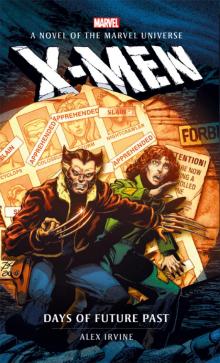 Marvel Novels--X-Men
Marvel Novels--X-Men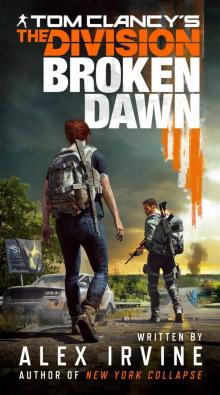 Tom Clancy's the Division
Tom Clancy's the Division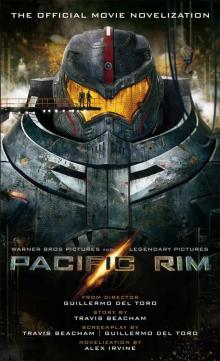 Pacific Rim: The Official Movie Novelization
Pacific Rim: The Official Movie Novelization Anthropocene Rag
Anthropocene Rag Black Lagoon
Black Lagoon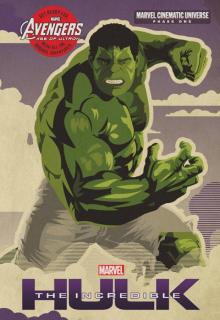 Phase One: The Incredible Hulk
Phase One: The Incredible Hulk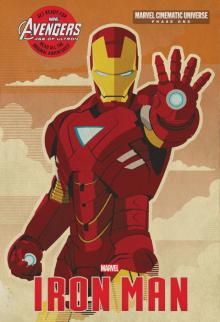 Phase One: Iron Man
Phase One: Iron Man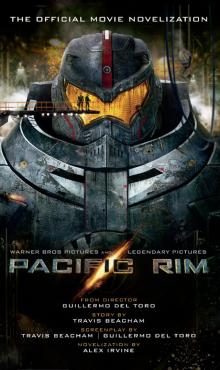 Pacific Rim
Pacific Rim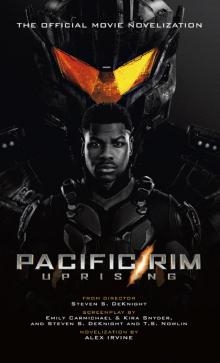 Pacific Rim Uprising--Official Movie Novelization
Pacific Rim Uprising--Official Movie Novelization Phase Three: Marvel's Captain America: Civil War
Phase Three: Marvel's Captain America: Civil War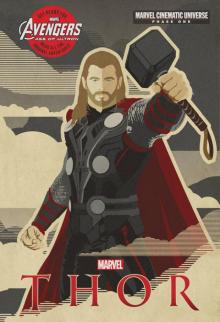 Phase One: Thor
Phase One: Thor Dawn of the Planet of the Apes: The Official Movie Novelization
Dawn of the Planet of the Apes: The Official Movie Novelization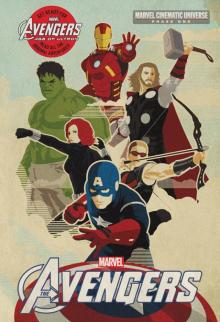 Phase One: Marvel's The Avengers
Phase One: Marvel's The Avengers Phase One: Captain America
Phase One: Captain America Exiles
Exiles The Seal of Karga Kul: A Dungeons & Dragons Novel
The Seal of Karga Kul: A Dungeons & Dragons Novel Marvel's Ant-Man - Phase Two
Marvel's Ant-Man - Phase Two The seal of Karga Kul (dungeons and dragons)
The seal of Karga Kul (dungeons and dragons) Mare Ultima
Mare Ultima Phase Three: MARVEL's Doctor Strange
Phase Three: MARVEL's Doctor Strange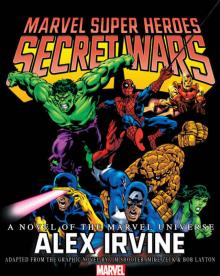 MARVEL SUPER HEROES SECRET WARS
MARVEL SUPER HEROES SECRET WARS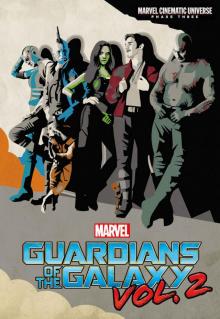 Phase Three: MARVEL's Guardians of the Galaxy Vol. 2
Phase Three: MARVEL's Guardians of the Galaxy Vol. 2 Dawn of the Planet of the Apes
Dawn of the Planet of the Apes Independence Day: Resurgence: The Official Movie Novelization
Independence Day: Resurgence: The Official Movie Novelization